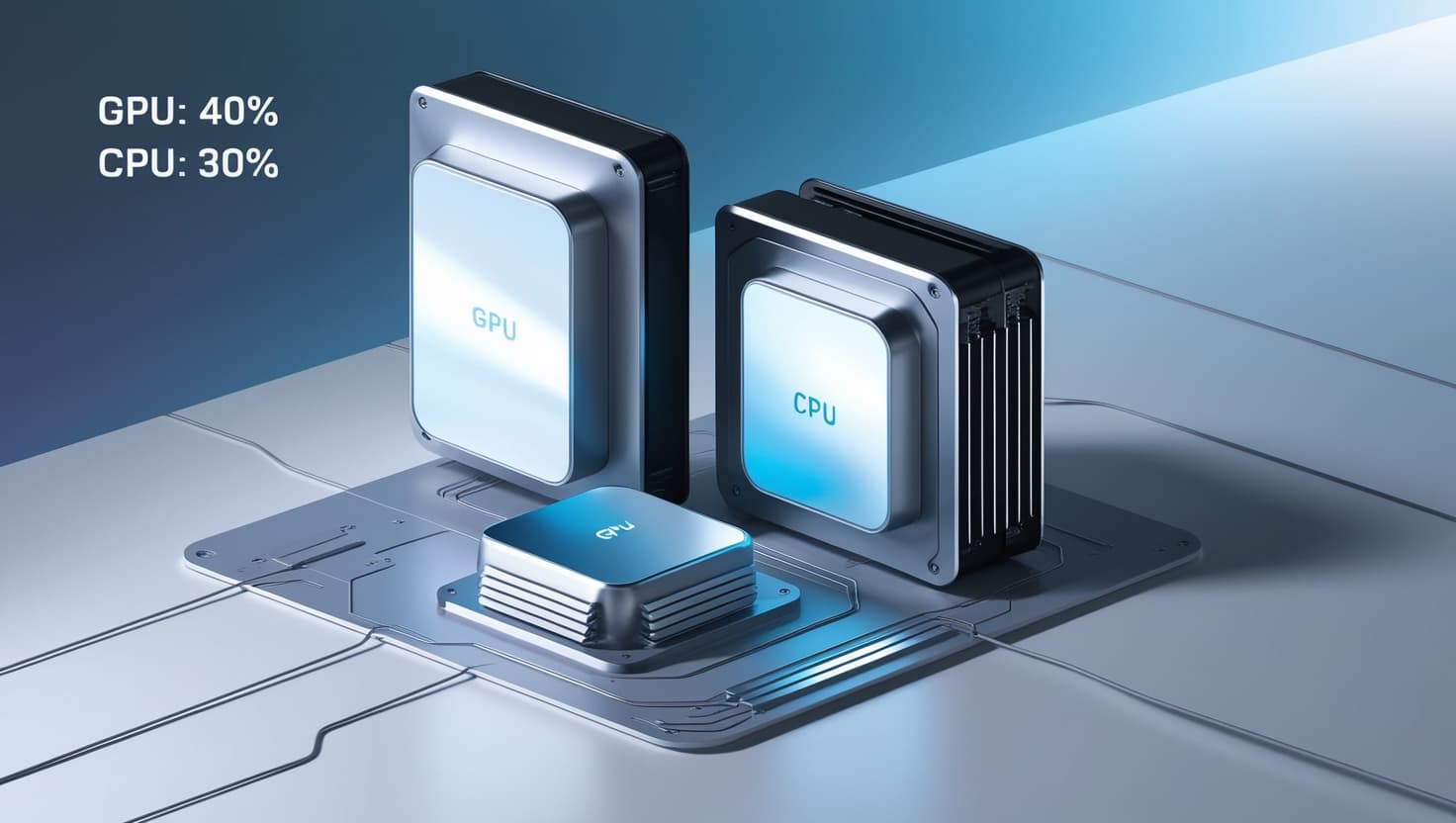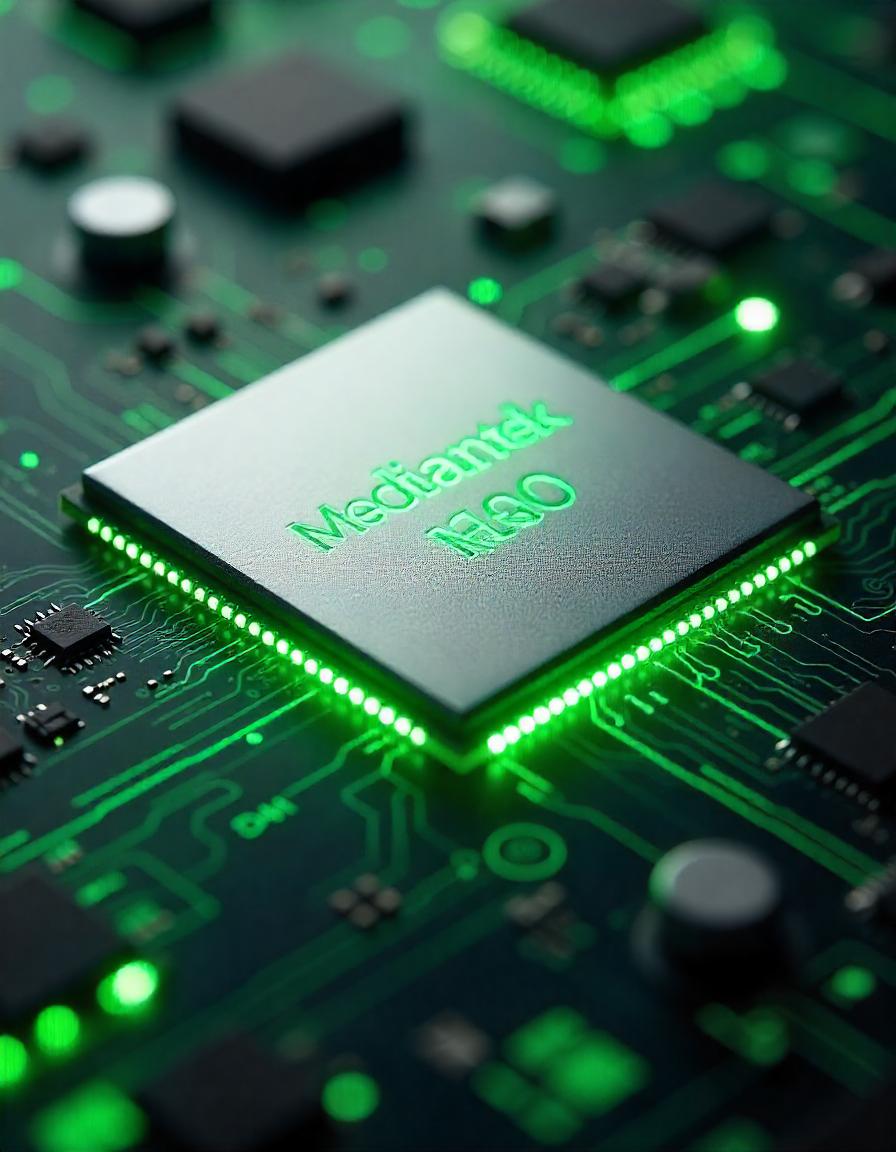I recently noticed that my GPU and CPU weren’t running at 100%, but I was still getting low FPS in games. Even with decent hardware, the performance was frustratingly bad. After some research, I realized it was due to poor game optimization and background apps hogging resources.
Experiencing low FPS in games while noticing that your GPU and CPU are not at 100% utilization can be confusing and frustrating. Typically, you’d expect your system to use all available resources for smooth gameplay, but this isn’t always the case. There are multiple factors that cause low performance even when your hardware isn’t maxed out.
In this article, Let’s explore why this happens and what you can do to fix it.
Table of Contents
What is FPS?

FPS stands for Frames Per Second, which measures how many frames (images) your system displays every second in games or videos. A higher FPS results in smoother visuals, improving the overall gaming or viewing experience. Typically, 60 FPS is considered optimal for smooth gameplay, while lower FPS can cause lag or stuttering.
Read more: https://techegos.com/cpu-core-ratio-sync-all-cores-or-auto/
Why Is Frame Rate Important in Gaming?
FPS stands for “frames per second,” and it measures how many frames your system can render per second during gameplay. The smoother the gaming experience, the greater the FPS. Low FPS leads to lag, stuttering, and an overall unenjoyable experience.
The Basics of CPU and GPU Usage:
Role of the CPU in Gaming:
The CPU (central processing unit) handles game logic, such as AI, physics, and system input. It communicates with the GPU to ensure that visuals are processed efficiently. A strong CPU is crucial for games that are CPU-bound, meaning games that require more from the CPU than the GPU.
Role of the GPU in Gaming:
The GPU (graphics processing unit) is responsible for rendering the game’s visuals. It handles the complex tasks of shading, texture mapping, and 3D rendering. A powerful GPU ensures higher quality graphics and smoother gameplay.
Common Causes of Low FPS with Underutilized GPU and CPU:
You may experience low FPS even if neither your CPU nor GPU is running at full capacity. Here’s why:
1. Poor Optimization in Games
Some games are not optimized to make full use of your hardware, leading to poor performance even on high-end systems.
2. Bottlenecking Issues:
When one component (often the CPU or GPU) restricts the performance of another, this is known as a bottleneck. For instance, if your CPU is weaker than your GPU, it can prevent the GPU from reaching its full potential, leading to lower FPS.
3. Background Applications:
Running too many background applications can hog CPU or GPU resources, reducing available power for your game.
Why Low FPS Despite High Specs?
It’s easy to assume that high-end hardware guarantees high performance, but other factors can affect FPS:
- Driver issues: Outdated drivers can limit performance.
- Overheating: Overheating can cause your GPU or CPU to throttle performance to avoid damage.
- Power settings: Incorrect power settings can prevent your CPU or GPU from running at full capacity.
Tools to Monitor CPU/GPU Usage:
Several tools can help you monitor the performance of your system:
- MSI Afterburner: A popular tool for monitoring GPU usage.
- HWMonitor: A comprehensive tool for tracking CPU and GPU temperatures and usage.
- Task Manager (Windows): Built-in system monitoring tool to track CPU and GPU usage in real-time.
Optimize GPU and CPU Usage:
Adjust Game Settings
Lowering certain in-game settings can have a massive impact on your FPS without drastically lowering visual quality. Focus on adjusting:
- Texture quality
- Shadow quality
- Anti-aliasing
Low FPS Troubleshooting Guide:
If you’re still experiencing low FPS:
- Check your GPU and CPU temperatures—high temperatures can cause performance throttling.
- Ensure your game settings are optimized for your hardware.
- Run performance tests using tools like 3DMark to identify specific bottlenecks.
GPU Bottleneck Troubleshooting:
If your GPU is not performing at its best, it might be bottlenecked by a weaker CPU. In such cases, upgrading your CPU can help balance your system and improve FPS.
Best CPU/GPU Combination for Gaming:

Pairing a powerful CPU with a high-performing GPU is key to maximizing gaming performance. Some of the best combinations for gaming include:
- Intel i9 + NVIDIA RTX 3080
- AMD Ryzen 9 + Radeon RX 6800 XT
How to Fix Low FPS Issues:
Start with the basics:
- Restart your system to clear out any temporary glitches.
- Update your drivers to ensure your GPU and CPU are working efficiently.
- Close unnecessary background applications to free up resources for your game.
Ways to Boost FPS in Games:
If you’re looking to boost FPS without upgrading your hardware, here are some tips:
- Lower resolution: Running the game at a lower resolution can significantly improve FPS.
- Disable V-Sync: Turning off V-Sync can increase FPS in certain games.
- Use performance modes: Enable performance mode in your GPU settings for better optimization.
Read more: https://techegos.com/cpu-usage-drop-when-i-open-task-manage/
Upgrade Your GPU or CPU for Better Performance:
If your system still struggles with FPS, it might be time for an upgrade. Consider purchasing a new GPU or upgrading your CPU to handle more demanding games.
What Causes Low FPS Despite CPU/GPU Not at 100% Utilization?
Low FPS while your CPU/GPU are not at 100% utilization usually means there’s a bottleneck in your system. This can occur due to poor game optimization, software issues, or hardware limitations. To understand these factors better, let’s break them down.
1. Game Optimization and Engine Issues:
Some games are simply not optimized to use all of your system’s resources effectively. This can result in the CPU and GPU not running at 100%, leading to lower FPS. Certain game engines only use a few CPU cores, meaning your GPU might be waiting on the CPU, causing less efficient use of your hardware.
2. Background Applications and Resource Hogging:
Another common cause is other programs running in the background, which take up resources and reduce the available power for your game. These applications might not allow your CPU or GPU to hit full utilization, leading to poor performance and FPS drops.
3. Thermal Throttling:
Thermal throttling occurs when your system overheats. When this happens, your CPU and GPU will slow down to prevent damage, which reduces their utilization and can lead to low FPS. Check your system’s temperatures and consider improving your cooling solutions if you suspect this is the issue.
4. V-Sync and Frame Rate Caps
Some games have settings like V-Sync that limit the frame rate to prevent screen tearing, which can result in the GPU not running at full capacity. Frame rate caps also limit how many frames your system can push, making it seem like your GPU/CPU are not at 100% utilization while still giving you poor performance.
Why Is My GPU and CPU Not at 100% but Low FPS in Games?
If your GPU and CPU are not fully utilized but you’re still seeing low FPS, it’s important to identify the specific bottleneck. This could be due to:
- CPU Bottlenecking: Your GPU might be waiting for the CPU to finish processing instructions, leading to reduced utilization and FPS drops.
- Power Settings: If your system is set to power-saving mode, it can reduce performance by limiting your hardware’s potential.
- Outdated Drivers: Old or misconfigured drivers can lead to inefficient hardware use, which impacts your FPS.
To resolve these issues, make sure your drivers are up to date, check your power settings, and lower the in-game settings to see if performance improves.
Solutions to Improve FPS with Low CPU/GPU Utilization
If you’re experiencing low FPS due to low CPU/GPU usage, try the following solutions:
- Optimize Your Game Settings: Lowering graphics settings can reduce the load on your CPU and GPU, allowing them to work more efficiently.
- Update Drivers: Make sure your graphics drivers are up to date for better system compatibility with newer games.
- Close Background Processes: Use task managers to shut down unnecessary programs that are taking up resources.
- Check for Bottlenecks: Run monitoring software to see if either your CPU or GPU is being held back. If one is underperforming, it may be time for an upgrade.
- Thermal Management: Keep an eye on your system’s temperature. Overheating can cause significant slowdowns, so ensure that your system is well-ventilated or consider upgrading your cooling solutions.
Why Is My GPU and CPU Not Fully Utilized But I Still Have Low FPS?
If your GPU and CPU are not at 100% utilization but you’re still experiencing FPS drops, you’re likely dealing with a bottleneck in your system. The system isn’t taking full advantage of your hardware, and there are several reasons why that might be happening. Let’s dive into the possible causes.
1. CPU/GPU Not at 100% Utilization, Getting FPS Drops:
Many gamers think that when CPU and GPU usage is low, performance should be high. However, that’s not always the case. Here are a few reasons why this occurs:
- Game Engine Limitations: Some games are poorly optimized, meaning they cannot efficiently use the available CPU or GPU power.
- Software Bottlenecks: Sometimes, background programs or inefficient system processes hog resources, reducing performance.
- Inadequate Power Supply: If your hardware isn’t getting enough power, it may not run at full capacity, leading to lower performance.
3. Why Do I Have Low FPS When My CPU and GPU Are Not Fully Loaded?
Another critical factor is the game’s optimization. Some games don’t efficiently scale across multiple cores, meaning even if your CPU has many cores, only a few might be used, leading to low utilization. Meanwhile, your GPU may also stay underused because it’s waiting on the CPU to process instructions. This imbalance creates low FPS despite your components not being at full load.
4. How Low CPU and GPU Usage Results in Low FPS?
When your CPU and GPU aren’t working at their maximum potential, it can often indicate a CPU bottleneck. This happens when the CPU can’t feed data to the GPU fast enough, causing a mismatch in performance. The GPU ends up waiting for the CPU, leading to low utilization and low FPS.
5. Low FPS in Games Despite Low CPU & GPU Usage:
So why does this problem often occur during gaming? Here are a few scenarios:
- Game Optimization: Some games are designed in a way that does not fully exploit modern hardware, leading to poor performance.
- In-game Settings: Sometimes, having in-game settings too high for the resolution or monitor refresh rate can cap performance, even with good hardware.
- Background Tasks: High resource usage by other programs can limit the resources available for the game, leading to lower performance.
Fixing Low CPU and GPU Usage for Better FPS:

Now that we’ve identified the reasons behind low FPS despite low CPU and GPU usage, here are a few steps to fix the issue:
- Optimize Game Settings: Lower graphics settings or disable features like V-Sync to see if performance improves.
- Update Drivers: Ensure your GPU drivers are up to date for better performance.
- Manage Background Processes: Use task manager to close any unnecessary background applications.
- Check for Thermal Throttling: Monitor your system temperatures and consider improving your cooling if your hardware is overheating.
- Power Settings: Ensure your PC’s power settings are set to “High Performance” to avoid underutilization of hardware.
Read more: https://techegos.com/cpu-svid-support/
FAQs:
1. Why do I have a good GPU but low FPS?
Even with a powerful GPU, low FPS can occur due to bottlenecks from a slow CPU, poor game optimization, background processes, or outdated drivers limiting performance.
2. Why is my GPU and CPU utilization so low?
Low utilization may result from game engine limitations, power settings, frame rate caps, or background applications hogging resources, preventing your hardware from running at full capacity.
3. Why is my GPU and CPU underperforming?
Underperformance can be caused by thermal throttling, outdated drivers, or system bottlenecks where the CPU or GPU can’t communicate efficiently, reducing their overall performance.
4. How do I fix low CPU usage on Windows 11?
Fix low CPU usage by updating drivers, adjusting power settings to “High Performance,” closing unnecessary background processes, and ensuring that your system is free of malware or software conflicts.
5. Why is my GPU and CPU not at 100% but I’m getting low FPS on my laptop?
Your GPU and CPU may not reach 100% due to thermal throttling, game optimization issues, or background tasks using resources, resulting in low FPS despite low hardware usage.
6. What are the signs of a CPU or GPU bottleneck?
Bottlenecking occurs when one component limits the other. Signs include sluggish performance, low FPS, and underutilized CPU/GPU, where one runs at max capacity while the other lags.
7. How do I know if I need to upgrade my GPU or CPU?
If either component consistently runs at full capacity but performance remains poor or FPS drops, it’s a sign you may need an upgrade to balance your system.
8. What software should I use to monitor GPU and CPU performance?
MSI Afterburner and HWMonitor are highly recommended tools for tracking GPU and CPU performance, offering real-time temperature and utilization data for better monitoring.
9. Can game settings cause low FPS?
Yes, settings like high textures, shadows, and resolutions can strain the GPU, causing low FPS, especially on systems that aren’t powerful enough to handle higher settings.
10. Does overclocking help improve FPS?
Overclocking boosts FPS by increasing hardware performance but should be done cautiously, ensuring proper cooling to prevent overheating or damage to your system.
Conclusion:
Low FPS while your GPU and CPU are not at 100% utilization can be perplexing, but the issue usually boils down to a bottleneck or inefficiency in your system. Whether it’s related to game optimization, background processes, or thermal throttling, identifying the root cause will help you improve performance. By tweaking game settings, updating drivers, and managing resources more effectively, you can boost FPS even when your hardware isn’t fully loaded.








Leave a Reply